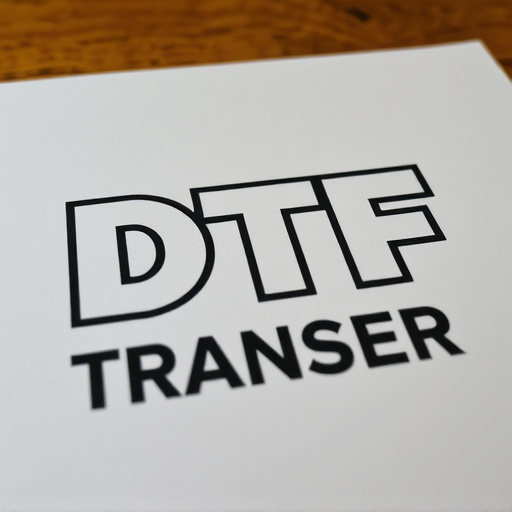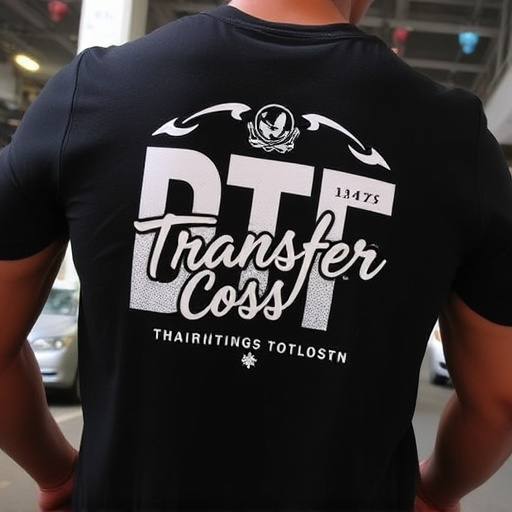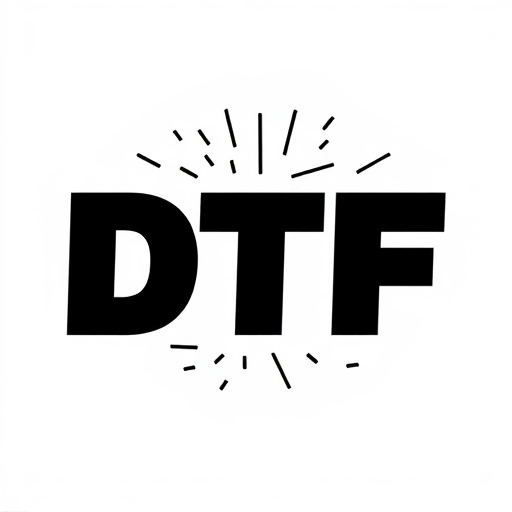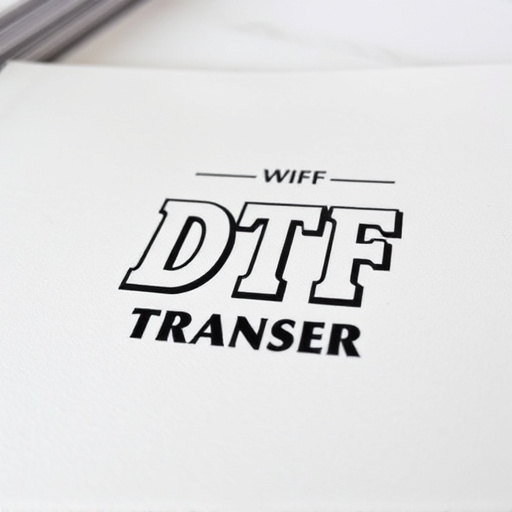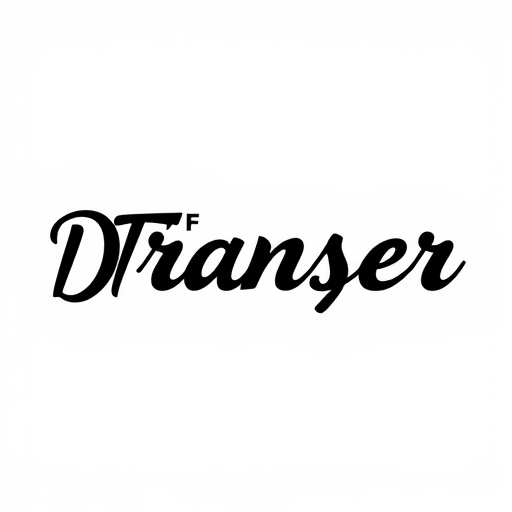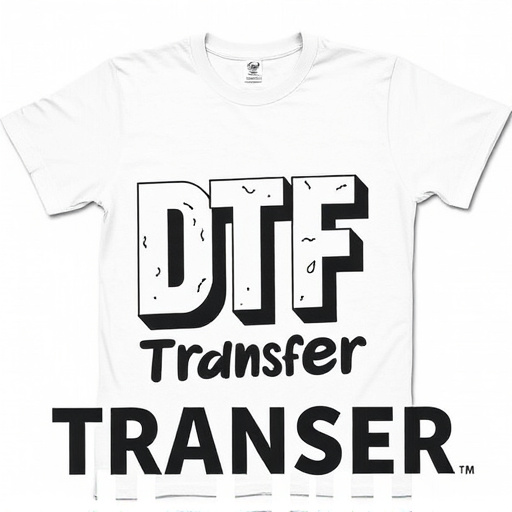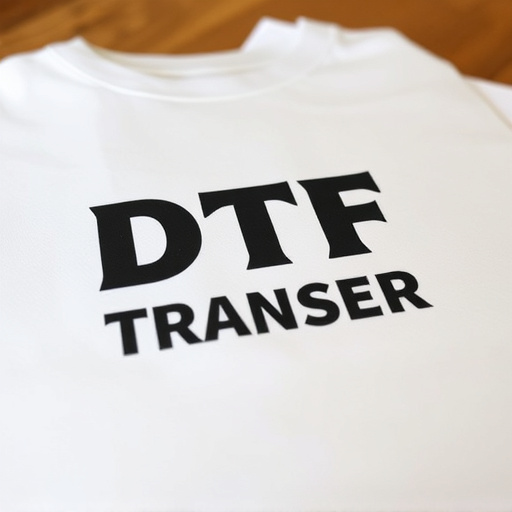Direct-to-Fabric (DTF) transfer printing is a modern textile printing method that allows high-quality graphics on polyester fabrics without traditional screen printing. The process involves digitally preparing designs and applying DTF ink onto a special machine to create a thin film, which is then heat-pressed onto the fabric for permanent, vibrant prints. DTF offers faster turnaround times, cost savings, and versatile design possibilities for fashion, branding, and art. Key to achieving high-quality DTF prints on polyester is selecting appropriate ink formulas based on fabric properties and intended use. Best practices include using premium transfer sheets, maintaining a calibrated printer, cleaning the fabric, setting correct print settings, testing on scrap material, and allowing adequate cooling time. Future trends in DTF printing aim to expand its range of applicable fabrics, enhance color vibrancy and durability, introduce eco-friendly inks, and accelerate production times through digital integration.
Discover the revolutionary world of DTF Transfer—a game-changing process transforming textile printing. This article delves into the intricacies of DTF, unraveling its science and immense benefits for customization. From understanding the DTF Transfer process to choosing the right DTF Ink formulas, we explore best practices ensuring high-quality DTF Prints. Uncover future trends in DTF Technology, setting the stage for innovative advancements that will continue to revolutionize printing on polyester fabrics.
- Understanding DTF Transfer: An Overview of the Process
- The Science Behind Adhering to Polyester Fabrics
- Benefits of DTF for Textile Printing and Customization
- Choosing the Right DTF Ink Formulas for Different Fabric Types
- Best Practices for Achieving High-Quality DTF Prints
- Future Trends in DTF Technology: Innovations to Watch
Understanding DTF Transfer: An Overview of the Process

Direct-to-Fabric (DTF) transfer printing is a cutting-edge technique that has revolutionized the way we apply graphics and designs to polyester fabrics. This process eliminates the need for traditional screen printing methods, offering a more efficient and versatile alternative. DTF involves transferring ink directly onto the fabric using heat and pressure, creating high-quality prints with vibrant colors and sharp details.
The DTF transfer process begins with preparing the design digitally, ensuring it is optimized for the specific fabric type and desired print outcome. The design is then separated into layers, each corresponding to a specific color in the final print. Next, a special DTF ink is applied to the design using a precision printing machine, creating a thin, flexible film. This film acts as an intermediate layer between the design and the fabric, allowing for precise placement during heat transfer. Once printed, the film is carefully aligned and pressed against the polyester fabric, where heat and pressure activate the ink, permanently adhering it to the fabric’s surface.
The Science Behind Adhering to Polyester Fabrics

The process of adhering film transfers to polyester fabrics, a technique known as DTF (Direct-to-Fabric) Transfer or Printing, involves a sophisticated scientific approach. This method revolutionizes traditional printing by enabling high-quality images and designs to be permanently imprinted on various materials, including polyester. The key lies in the chemical interaction between the fabric’s surface and the transfer medium.
DTF prints utilize specialized inks and a heat press to fuse the design onto the fabric. The ink is applied directly to the polyester, creating a robust bond when heated. This technology ensures that vibrant DTF prints are not just temporarily painted but actually become part of the fabric’s structure, making them durable and washable. The science behind DTF transfers has opened up new possibilities for fashion, branding, and art, allowing for unique, long-lasting designs on polyester fabrics.
Benefits of DTF for Textile Printing and Customization

Direct-to-fabric (DTF) transfer printing has revolutionized textile customization. This innovative process offers numerous advantages over traditional methods, making it a game-changer for businesses and individuals looking to create custom, high-quality prints on polyester fabrics. By eliminating the need for intricate setup and multiple production stages, DTF allows for faster turnaround times and greater cost-effectiveness.
One of the key benefits of DTF printing is its exceptional versatility. It enables the creation of detailed, vibrant DTF prints with sharp edges and rich colors, perfect for a wide range of applications, from clothing and accessories to home décor items. This method also ensures that designs can be easily personalized, allowing for unique, on-demand production and catering to individual customer preferences.
Choosing the Right DTF Ink Formulas for Different Fabric Types

When selecting DTF (Direct to Fabric) ink formulas, understanding the unique properties of different fabric types is paramount. Each fabric, whether cotton, polyester, or a blend, has distinct characteristics that influence ink adhesion and print quality. For instance, polyester fabrics, known for their smooth surface and durable nature, demand specific DTF inks designed to cling firmly without smudging or fading.
Choosing the right DTF ink requires considering factors like fabric porosity, moisture content, and intended use. Formulas tailored for polyester fabrics often incorporate advanced polymers that offer superior bond strength and resistance to environmental factors. These inks ensure vibrant, long-lasting DTF prints on a variety of textile surfaces, enhancing the potential for diverse applications in apparel, home decor, and more.
Best Practices for Achieving High-Quality DTF Prints

To achieve high-quality DTF (Direct to Fabric) prints on polyester fabrics, several best practices should be followed. Firstly, using top-quality materials is essential; this includes premium DTF transfer sheets and inks designed specifically for fabric applications. Ensure your printer is well-calibrated and maintained for optimal performance. The preparation of the polyester fabric is crucial; it must be cleaned and pre-treated to remove any contaminants that could interfere with the printing process.
Additionally, proper print settings and techniques are vital. This involves setting the correct temperature and pressure for the DTF transfer, as well as optimizing the print speed and resolution. Testing on scrap material before applying the design to the final fabric is recommended to ensure the best results. Lastly, consider the post-print process; allowing sufficient cooling time and properly curing the ink will enhance the durability and vibrancy of the DTF prints.
Future Trends in DTF Technology: Innovations to Watch

The future of direct-to-fabric (DTF) printing is brimming with exciting possibilities as technology continues to evolve. One prominent trend involves the exploration of new materials and substrates, pushing the boundaries of what was previously possible. Researchers are developing innovative DTF transfer techniques that can adhere to a wider range of fabrics, including delicate silk and even three-dimensional structures. This expansion opens doors for designers and artisans to create intricate and unique garments.
Additionally, advancements in ink formulations promise to enhance color vibrancy and durability. Eco-friendly inks made from sustainable sources are gaining traction, addressing environmental concerns while maintaining high-quality prints. As DTF technology integrates with digital printing methods, we can expect faster production times, on-demand customization, and even the potential for interactive or changeable DTG prints. These innovations will undoubtedly revolutionize the apparel industry, offering endless creative opportunities for brands and designers alike.







